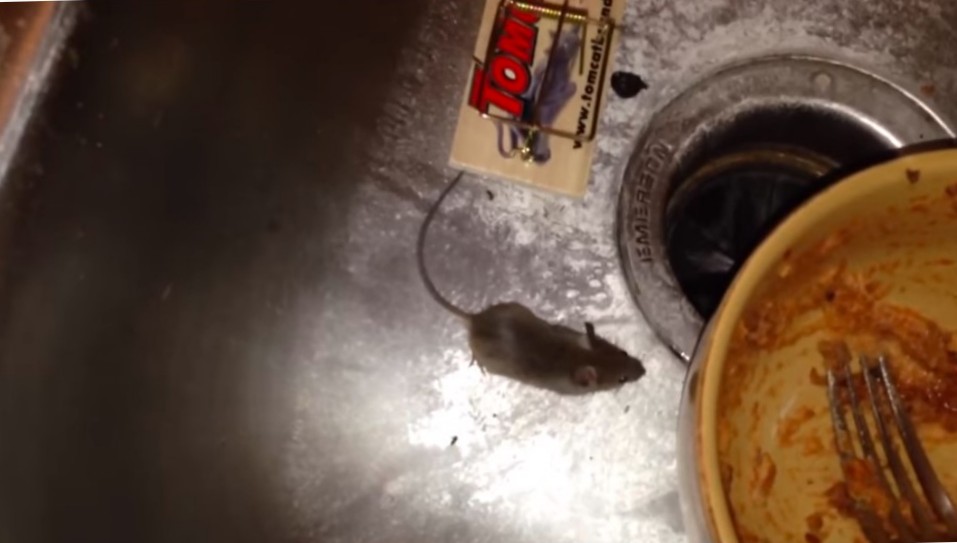
Have you spotted mouse droppings under the sink in the kitchen? This is actually one of the common places to find signs of a rodent infestation in a residential property, and it's mostly because of those pipes that lead in and out of your home. If maintenance and repairs or reinforcements are not performed, rodents and other wild animals have plenty of opportunity to crawl in. Mice and rats are known for chewing everything that gets in their way, and they will chew through whatever material they need to.
If you have mice or rats under the sink in the kitchen or bathroom, this is what we suggest you do next:
1 - Don't use poison
It's going to be your first instinct to rely on poison to get rid of rodents, and perhaps even more, different, larger wild animals, too. Don't do this.
Poison causes more problems than it solves, and could leave you with a string of dead mice decomposing all over the home. This is going to be even more dangerous and a lot more smelly than the mice were in their alive form. You have no control over where poisoned mice go, and some rodents, mostly rats, have shown an incredible immunity to rodenticides. Not only that, rodenticides, also known as rat or mouse poison, is one of the least humane methods to get rid of them.
2 - Remove all dangerous or toxic substances
And make sure you keep them somewhere safely stored away, not just away from mice, but also away from little fingers and toes if you have kids or pets in the same building. Mice and rats can both easily and very quickly chew through the plastic containers of cleaners and potentially dangerous substances, and you'll have a similar, negative result as you would using poison.
3 - Clean the entire area properly
Remove any feces that you see, because then it will be easier to see whether or not they come back. If you don't remove the feces, you won't know whether or not any more feces has been added to the pile. (Unless it's a glaringly obvious difference, obviously.)
Not only that, leaving the feces where it virtually guarantees the spread of disease, and with mice, there are more than a few you'll need to worry about. These diseases can affect both domesticated pets just as much as they can affect humans.
4 - Make note of holes or potential entry points
By making a note (that you keep) of these potential entry points, you can keep better check of the maintenance of your home or building. You can check when you repaired certain areas, making sure you then remember to go back and check them, ensuring your repairs are holding up. If you have a lot of holes, keeping a little record is a great idea, and it's also a great idea when you have larger infestations to take care of.
5 - Seal the entry points and repair the holes
Making note of all those holes is just half the problem — you then need to seal them right back up again. There are plenty of things that you could use for this, but we personally recommend using caulking and some sort of steel wire wool. The caulking probably won't be all that difficult for rodents to chew through, but the steel wire wool gives them a barrier that is almost impossible to overcome.
6 - Check the rest of the room
If you've seen signs of rats or mice in one part of the room, make sure you're checking other areas of that same room. It is highly unlikely that there will only be one route in and out of that room, or one place that rodents leave those tell-tale signs. You should also check all of the rooms in the building, and also the outside of the building. This is an all-over job, for sure.
7 - Check the exterior walls of that room
And the rest of the home while you're there. Yes, it'll take some time off of your relaxing weekend, but how relaxing will that weekend really be when you've got rodents running around your home, chewing everything in sight, and leaving a bunch of disease threats all over the place?
8 - Place traps
There are far too many methods of rat removal on the market these days, and although that can sometimes be good for consumers, it can also be a bad thing, too.
Lethal traps are one of the only professional recommended methods of rodent removal and prevention. They reproduce far too quickly for humans to ever get a complete hold on the situation, and trap and release methods rarely work. The mouse dies in its new habitat if it doesn't find its way back home first.
9 - Check the rest of the building, internally
We've already mentioned checking every room in the building for signs of mouse activity, but you should check other parts of the house, too. Wall cavities are a prime hotspot for mice and other rodents, and other wild critters, too. We've come across squirrels inside cavities, opossums, rats, mice, birds, bats, and more. The same can be said for the basement and attics. Because these levels of your home are rarely visited by humans, they make great hiding spots for wild animal invaders.
10 - Check back regularly and keep up maintenance
This is why we suggested keeping a note of all the world you have done, potential future problematic hotspots, and where you have seen the most activity. By doing this, you can check up on those spots regularly, making sure that no feces is left behind again, no chewing seems to have taken place, and no rats or mice have moved into the building since.
Go back to the mousecontrol.org home page.